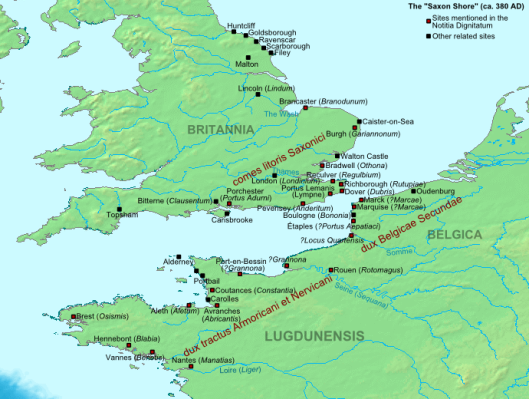Monthly Archives: December 2015
Silver Shields
Johnny Shumate illustrations
In Alexander’s army, the Argyraspides (“Silver Shields”) were its most effective and ferocious component. Under Eumenes they were invincible and enjoyed a legendary reputation. The unit was broken up and largely dispersed by Antigonus, but the name had its attractions. It was adopted by the shock troops of the Seleucid armies, who served as the royal infantry, recruited as the elite of the army. They will have been set on justifying the expectations inherent in the name. Regimental pride was (and is) a powerful motive force, and the Argyraspides will have ensured that their nomenclature was instantly familiar.
The term argyraspides (`silver shields’) first appears as an alternative title for the hypaspistai at the Battle of Gaugamela (331) in Diodorus 17.57.2 and Curtius 4.13.27. Justin 12.7.5 (cf. Curt. 8.5.4) tells us that before the Indian campaign Alexander had the men’s arms overlaid with silver and he called…
View original post 521 more words
Traveller: Out of the Box–The Tools Are Not The Setting

This quote is from the first volume of the original Dungeons & Dragons:
DUNGEONS and DRAGONS will provide a basically complete, nearly endless campaign of all levels of fantastic-medieval wargame play. Actually, the scope need not be restricted to the medieval; it can stretch from the prehistoric to the imagined future…
–Dungeons and Dragons: Book 1 Men & Magic
Dave Arneson and Gary Gygax
Please note how extraordinary this quote is in the context of what people came to think of Dungeons & Dragons as over time. What was originally designed to being a framework to play any setting ended up a vaguely Tolkienesque default setting in the imaginations of most people.
Some thoughts:
As noted elsewhere, Traveller grew distinctly out of the roots of Dungeons & Dragons.
Here are the opening sentences from the last page of Traveller Book 3 (1981) under the heading A Final Word:
Traveller is necessarily a…
View original post 1,241 more words
The Importance of Light Troops/Peltasts

 PELTASTS VERSUS A PHALANX: the peltasts throw their javelins into the phalanx, but their lack of armour means that they can evade any attempt by the hoplites to bring them to battle. They can continue to wear down the phalanx with impunity.
PELTASTS VERSUS A PHALANX: the peltasts throw their javelins into the phalanx, but their lack of armour means that they can evade any attempt by the hoplites to bring them to battle. They can continue to wear down the phalanx with impunity.
Greek armies included light troops as early as Xerxes’ invasion in 490 BC, and Herodotus recorded that the Athenians had 800 archers at Plataea. They learned the value of combined arms early – note Thucydides’ account of the Athenians pursuing the Corinthians from Megara in 459 BC:
‘As the defeated Corinthians were retreating, quite a large section of their army… being uncertain of their route, plunged into an enclosure on someone’s estate which had a deep ditch all around it so that there was no way out. Seeing what had happened, the Athenians closed up the main entrance with their hoplites and, surrounding the rest of the enclosure…
View original post 1,354 more words
Rhodes 305–304 BC
The engineering marvels of the Ancients
 The Helepolis at Rhodes
The Helepolis at Rhodes
Height: 130-140ft (40-43m)
Base: 72ft (22m) square
Armament: Lowest floor: 2×180 Iber (82kg) catapults; 1×60 Iber (27kg) catapult 1st floor: 3×60 Iber (27kg) catapults Next five floors: 2×30 Iber (14kg) catapults Top two floors: 2x dart-throwers.
Construction: main beams are fir or pine, wheels and horizontals are oak. All major joints are reinforced with iron plates. To protect the machine from fire-missiles, its exterior is clad with iron plates on 3 sides.
Propulsion: the machine is mounted on eight wheels each 15ft (4’6m) in diameter. It is propelled by a capstan and belt drive, with a suitable mechanical advantage, (manned by roughly 200 men). Additional thrust could be provided from the rear.
Weight: Probably around 150 tons.
Siege towers had existed since Assyrian times. That illustrated is the famous helepolis built by Epimachus of Athens for Demetrius “Poliorcetes” (the Besieger) in 304 BC. This was the…
View original post 1,213 more words
Rhodes 305–304 BC
The engineering marvels of the Ancients
 The Helepolis at Rhodes
The Helepolis at Rhodes
Height: 130-140ft (40-43m)
Base: 72ft (22m) square
Armament: Lowest floor: 2×180 Iber (82kg) catapults; 1×60 Iber (27kg) catapult 1st floor: 3×60 Iber (27kg) catapults Next five floors: 2×30 Iber (14kg) catapults Top two floors: 2x dart-throwers.
Construction: main beams are fir or pine, wheels and horizontals are oak. All major joints are reinforced with iron plates. To protect the machine from fire-missiles, its exterior is clad with iron plates on 3 sides.
Propulsion: the machine is mounted on eight wheels each 15ft (4’6m) in diameter. It is propelled by a capstan and belt drive, with a suitable mechanical advantage, (manned by roughly 200 men). Additional thrust could be provided from the rear.
Weight: Probably around 150 tons.
Siege towers had existed since Assyrian times. That illustrated is the famous helepolis built by Epimachus of Athens for Demetrius “Poliorcetes” (the Besieger) in 304 BC. This was the…
View original post 1,213 more words
ANCIENT SUNKEN TOWN BEING INVESTIGATED WITH 3D TECHNOLOGY
 Lechaion is an ancient harbor-town of ancient Corinth that went underwater after being destroyed by an earthquake. International team of researchers are joining up to investigate using innovative technologies.
Lechaion is an ancient harbor-town of ancient Corinth that went underwater after being destroyed by an earthquake. International team of researchers are joining up to investigate using innovative technologies.
View original post 285 more words
Making Custom Monsters Using DND Monster Maker
I’ve mentioned before that I’m gearing up to DM for a larger than recommended party for D&D within the next two weeks. We ran a custom, combat heavy, one-shot as a test run because I wanted to try a few things out with them, particularly how combat would work in such a large group. Thankfully everyone seemed to have their act together and genuinely enjoy it so I have high hopes.
One of the things I wanted to test in this quick one-shot was my ability to make custom monsters. I tend to throw in a big boss creature in most dungeons; partly because it’s my style and partly because everyone in the group is an avid gamer and tends to enjoy the big boss fights.
To do this I had to first figure out what would be a good CR or total EXP for a boss encounter. I wanted…
View original post 485 more words
The Roman Navy after Actium
 Bases and command sectors of the Saxon Shore system
Bases and command sectors of the Saxon Shore system
After Actium, as we have seen, Augustus concentrated his ships at two bases, Misenum and Ravenna, to watch the western and eastern Mediterranean. These two ports continued to be the chief bases of the Roman fleets for three centuries or more. Under the Empire, the fleets had, we may think, not much to do. Little is heard about piracy or other seaborne hazards. The ships served to transport troops to new postings, and protect the grain supply to the city. Detachments from both Misenum and Ravenna were based in Rome, to handle the awnings at theatres and amphitheatres there. The overall manpower of both fleets remained at a high level, with about 10,000 sailors at each base. Under Augustus and his immediate successors the fleets were commanded by equestrian officers, often ex-legionary tribunes, and later by freedmen of the Emperor’s household…
View original post 1,146 more words
Siege of Jerusalem (70 AD)
 “The Siege of Jerusalem”, Peter Connolly
“The Siege of Jerusalem”, Peter Connolly

 Roman army progress during the siege of Jerusalem (70 AD)
Roman army progress during the siege of Jerusalem (70 AD)
Date: March–8 September 70.
Location: central Israel.
Forces Engaged: Roman: 70,000 men. Commander: Titus.
Jewish: three factions: 15,000 men under Simon Bar-giora; 6,000 men under John of Gischala; 2,400 under Eleazar.
Importance: Roman capture and destruction of Israel’s capital marked the beginning of the Jewish Diaspora.
Historical Setting
The Zealots were a revolutionary faction in Israel during the Roman occupation, active in the first century a.d. Although the Romans rarely did anything to hamper the Jews of Israel in the practice of their religion, the Roman worship of their own gods offended many Jews. The affront they felt to their faith, coupled with a series of harsh Roman rulers, set off a revolt that had ruinous consequences for the Jewish people.
The first mention of a popular leader resisting Roman rule is that of…
View original post 1,652 more words
Faces of The Past!
Facial reconstructions show how murdered 6th century men and women might have looked. Cramond grave could have been crypt for royal burials in 6th century Edinburgh
 Male, aged 18-25 (died 540-600 AD). Isotopic analysis indicates he grew up in or around Cramond and spent his last surviving years in the area. Forensic evidence reveals he suffered from a sharp-force injury and two cuts above his right eye which healed before his time of death, suggesting he may have been a warrior fighter.
Male, aged 18-25 (died 540-600 AD). Isotopic analysis indicates he grew up in or around Cramond and spent his last surviving years in the area. Forensic evidence reveals he suffered from a sharp-force injury and two cuts above his right eye which healed before his time of death, suggesting he may have been a warrior fighter.
A mass burial found under an Edinburgh car park in 1975 included two murdered warriors and at least two generations of the same family, according to archaeologists who have used the 6th century remains to create a series of facial reconstructions.
 Female, aged 18-25 (died 430-570 AD). Isotopic analysis reveals she grew up locally and spent her final years in Edinburgh. The forensic report points…
Female, aged 18-25 (died 430-570 AD). Isotopic analysis reveals she grew up locally and spent her final years in Edinburgh. The forensic report points…
View original post 447 more words










